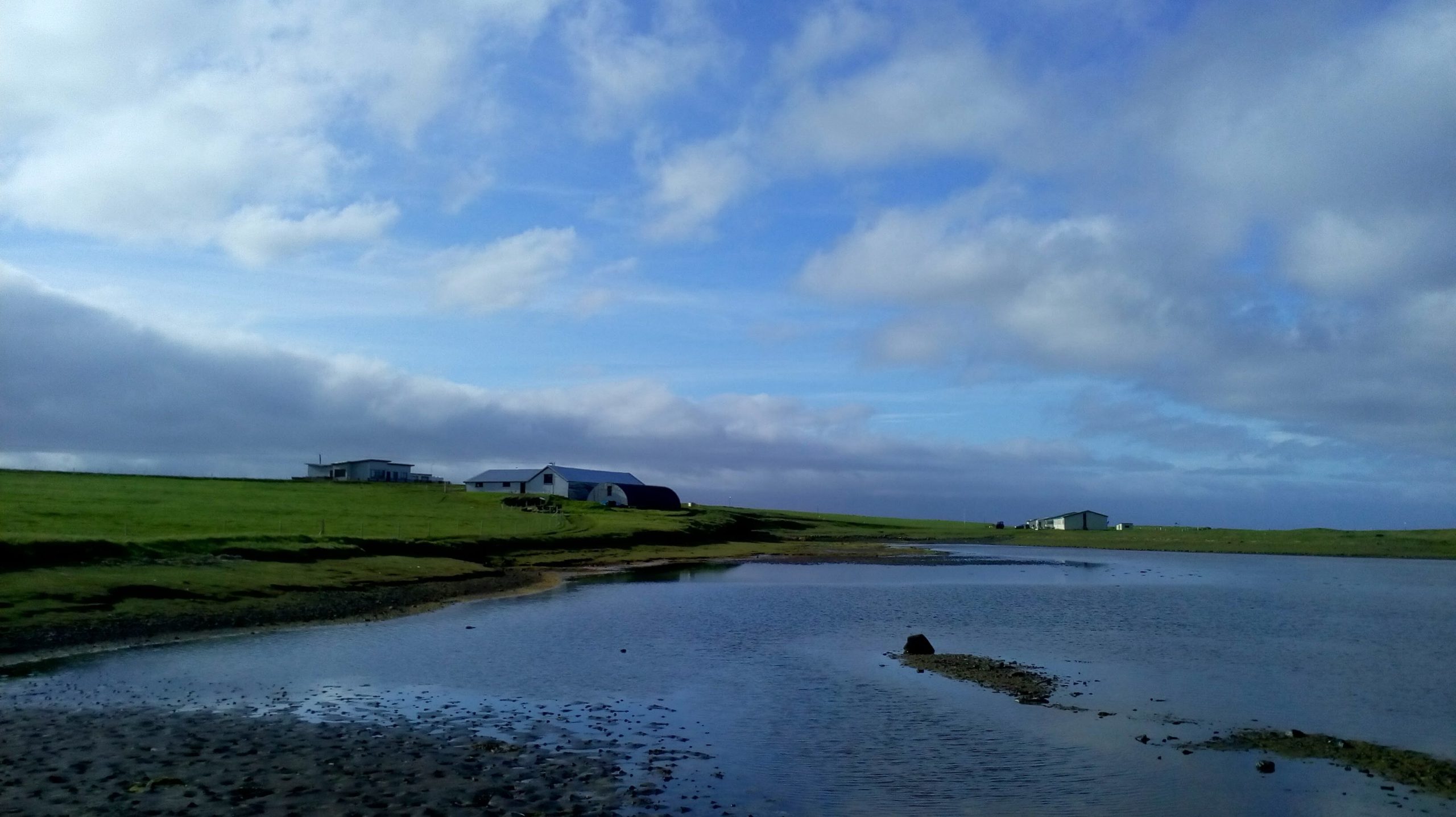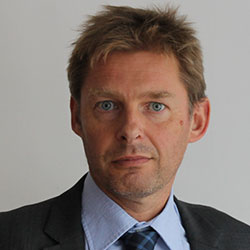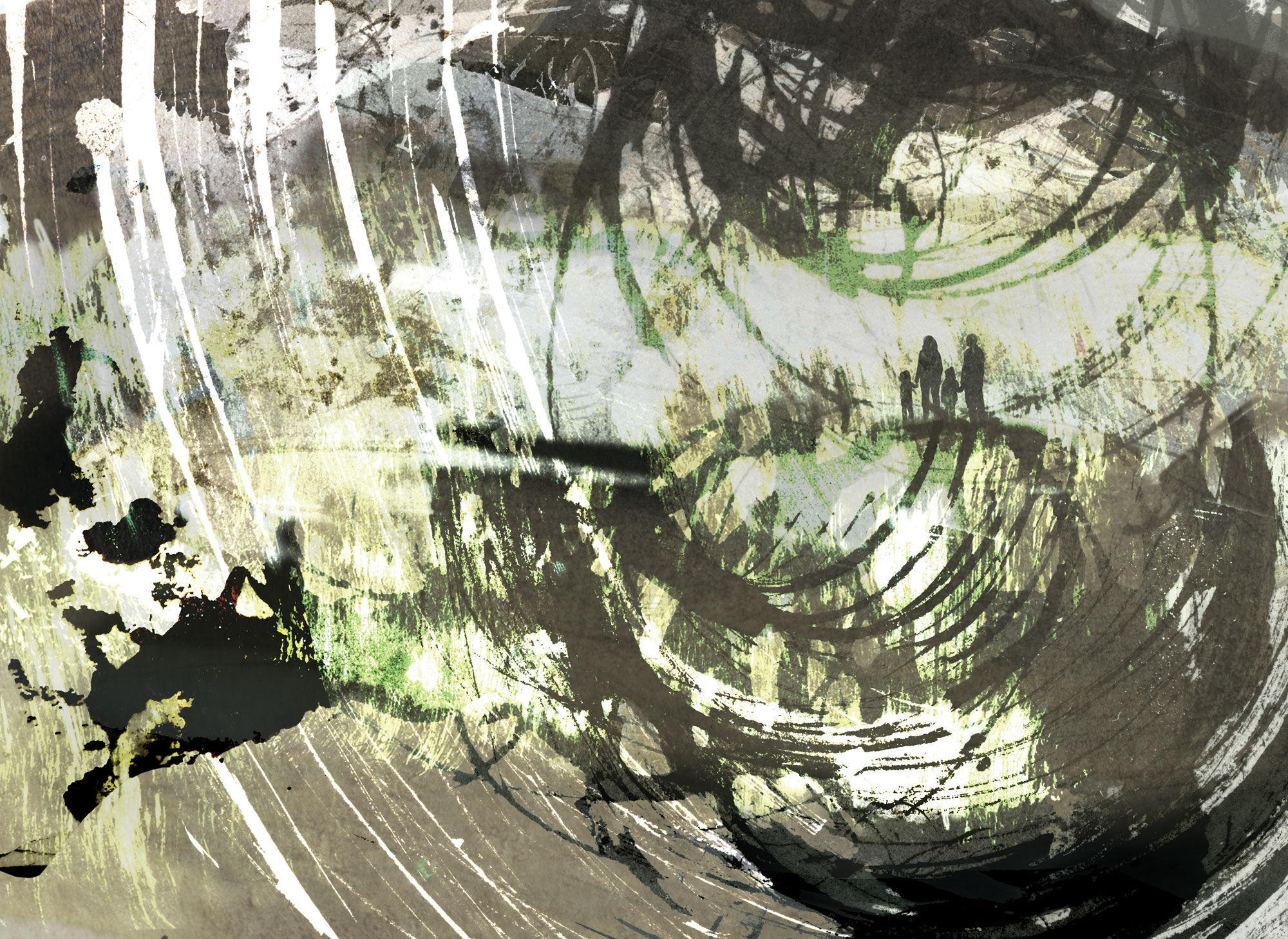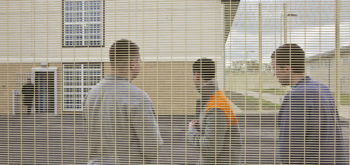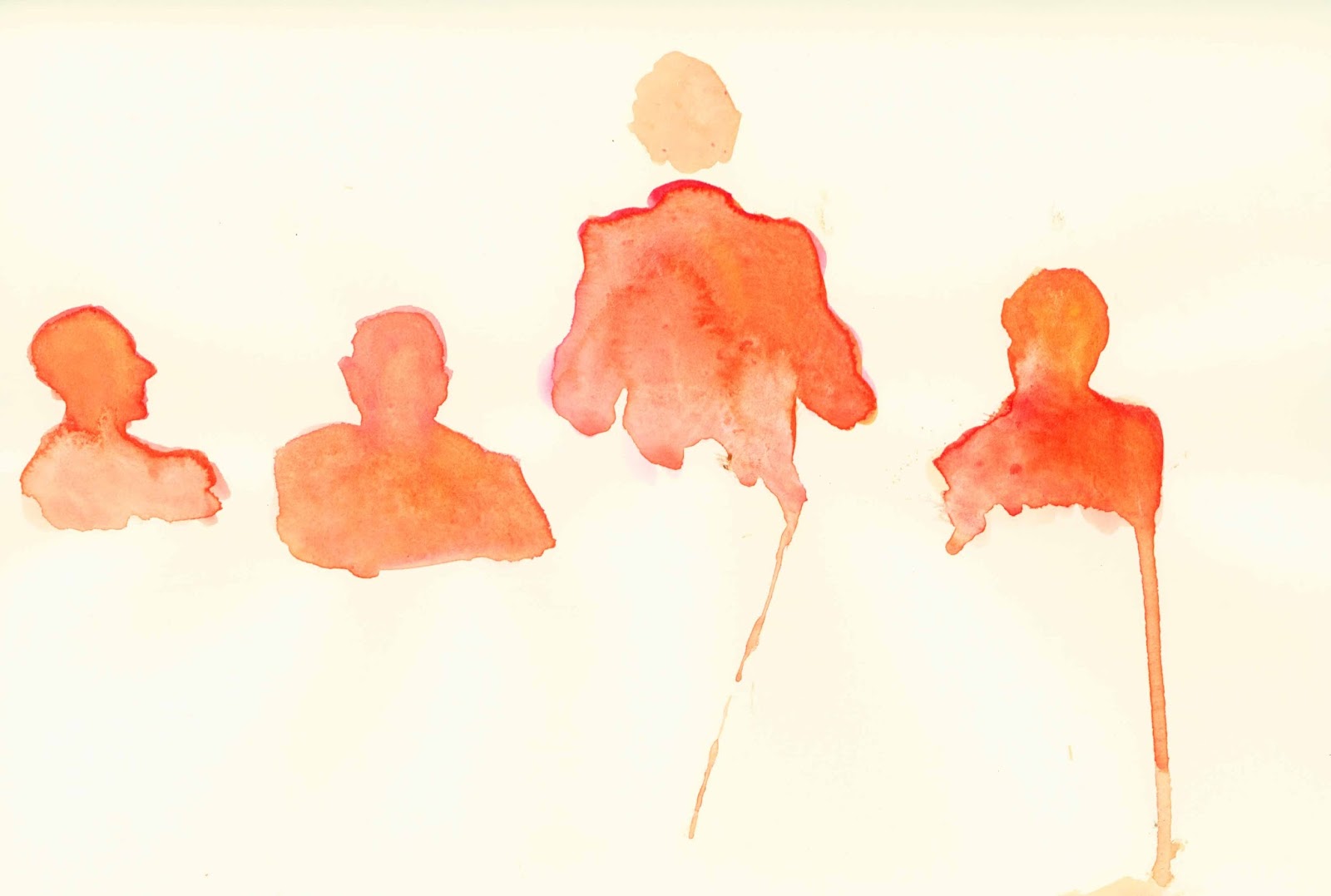What would happen if prisoners were given the keys to their own rooms, and were free to walk out whenever they wanted? The criminologist Professor Francis Pakes went to iceland – and deliberately sent himself to prison – to find out. This is is an edited version of an article that appeared in Proof magazine issue 4 – you can buy Proof here.
 In June 2018 I arrived at Keflavík Airport in Iceland ready to report to prison – as a volunteer, I should add. Back home, I’m a criminology professor.
In June 2018 I arrived at Keflavík Airport in Iceland ready to report to prison – as a volunteer, I should add. Back home, I’m a criminology professor.
The prospect left me excited and anxious in equal measure. How was I going to cope? When I collected my rental car, I had to put down my place of stay.I wrote:‘Kvíabryggjaprison.’ The guy behind the desk didn’t bat an eyelid.
I was going to spend a week in an open prison in Iceland. I would be living as a prisoner. There was no turning back now. I was nervous: not only about being a ‘prisoner’ but how I would fare as a researcher?
Some might say I’d taken academic research a bit far. I don’t think so. I got the idea from the criminologist Rod Earle, who became an academic after a stint in prison in his youth. He wrote in 2014 that spending time living the life of a prisoner, even if only for a week, would allow for insights that you would never get otherwise. I would be spending a week in two different prisons.
I discovered that he was right.
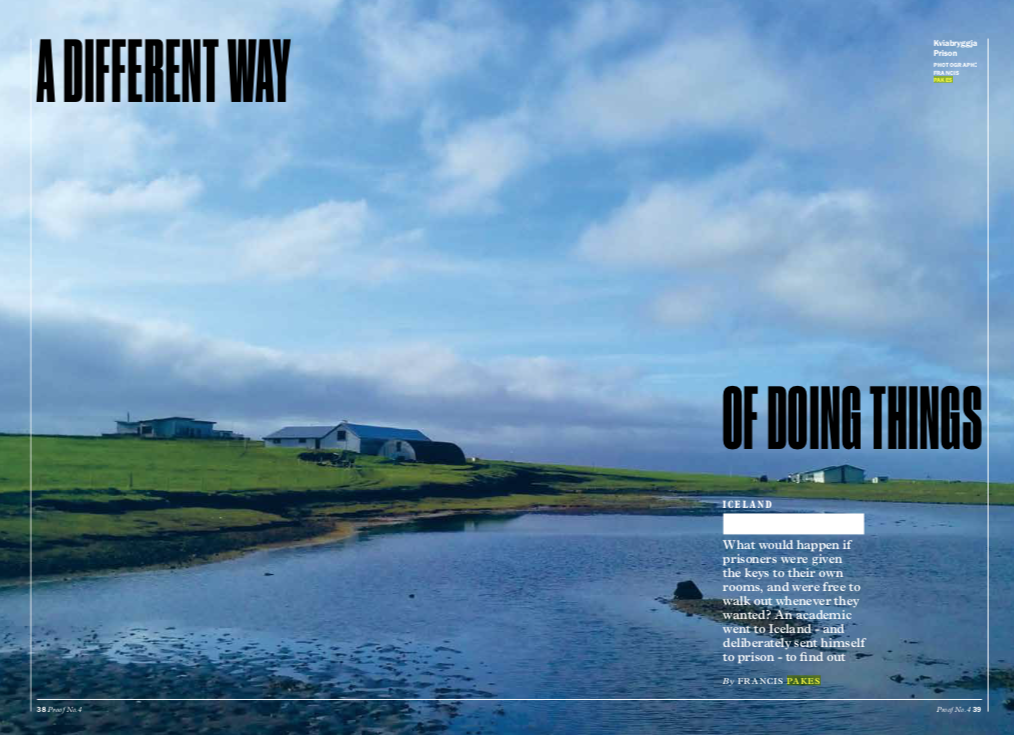
From Proof magazine: the Crime and Punishment issue
Prison environments are inherently impenetrable. By their very nature, they are difficult for an outsider to understand. Short of committing a crime, the next best thing is to ask to go in, spend a bit of time there, and get a feel for the culture, the atmosphere and the daily routine. But this is no simple task: it requires careful liaison with prison authorities, prison governors, insurance companies and ethics committees. Thankfully, and perhaps surprisingly, both the University of Portsmouth and the Icelandic prison authorities seemed to like the idea.
Here in Iceland, I had an ‘access all areas’ arrangement. I had the freedom of the prison, or at least as much ‘freedom’ as any prisoner would have. This was a researcher’s dream.
So why go to Iceland? Over the last decade, criminologists have placed the spotlight on the nordic countries. In particular, criminologist John Pratt visited nordic prisons and described their distinctiveness: cleaner, safer, smaller and better equipped. I followed in his footsteps.
I marvelled at prison conditions in some of the prisons in southern norway. I visited Halden Prison, which looks like a hotel, save for a large concrete wall around its perimeter. I then went to Bastøy, the idyllic island prison set in the Oslofjord, near the town of Horten. It looks and feels like a small community maintaining a farm with livestock.
Like many criminologists, I despair of the state of many UK prisons.The decades of underinvestment are telling: rates of violence have shot up; riots proliferate; and many youngsters in young offender institutions go hungry. It is a national disgrace.This in part drives my interest in nordic prisons: it is a journey of discovery to try to find prisons that are better, or at least, less harmful to the prisoner.
I zoomed in on Iceland where John Pratt had not ventured. The first signs were promising. Iceland’s prisons are even smaller and the open prisons even more open than what I saw in Norway. Iceland is similar to Norway in many ways but also not the same.Would this perhaps be a society in which prisons had developed to become something yet even more different? This is what I set out to find out.
My research involved Iceland’s two open prisons.
Kvíabryggja in the west and Sogn in the south. Kvíabryggja had its 15 minutes of fame a few years ago when the bankers convicted after the financial crash were sent there. The prison looks like any other small farm in western Iceland. The location is stunning. It’s right next to the sea with a beach that is a mixture of pebbles and dark sand. Next to it, to the east, is the imposing Kirkjufell mountain. It’s a challenge for climbers and photographers alike, and a highlight on the tourist trail. Just over the road is the charming waterfall of Kirkjufellsfoss. The surroundings even formed the backdrop for some scenes in Game of Thrones. Kvíabryggja prison is dwarfed by the mountain.
Next to the mountain the prison looks inconspicuous. It recently had to put up a new sign to remind tourists to keep out. In the past, tourists would simply drive up – to check that this place is actually a prison, or to take a picture of Kirkjufell mountain from a different angle. strangely, this is a prison that works harder on keeping people out than in.
Sogn prison, by contrast, is set in a former sanatorium. It’s a three-storey building nestled against a hill. despite its proximity to nearby small towns, its setting is also highly secluded. The views are vast: all the way to the sea, about ten miles away.
Of course, Iceland has closed prisons, too. newly-built Hólmsheiði is frequently the first prison that new prisoners enter. Litla Hraun is a high-security prison that looks much like a smaller version of those in other European countries. There is also Akureyri prison, which is located in Iceland’s northernmost sizeable town, a six-hour drive from reykjavik (in good conditions). Akureyri is tucked away, annexed to a police station, holding only ten prisoners. There is no separate women’s prison in Iceland. Several are held in Hólmsheiði, and women may end up in the open prisons as well.
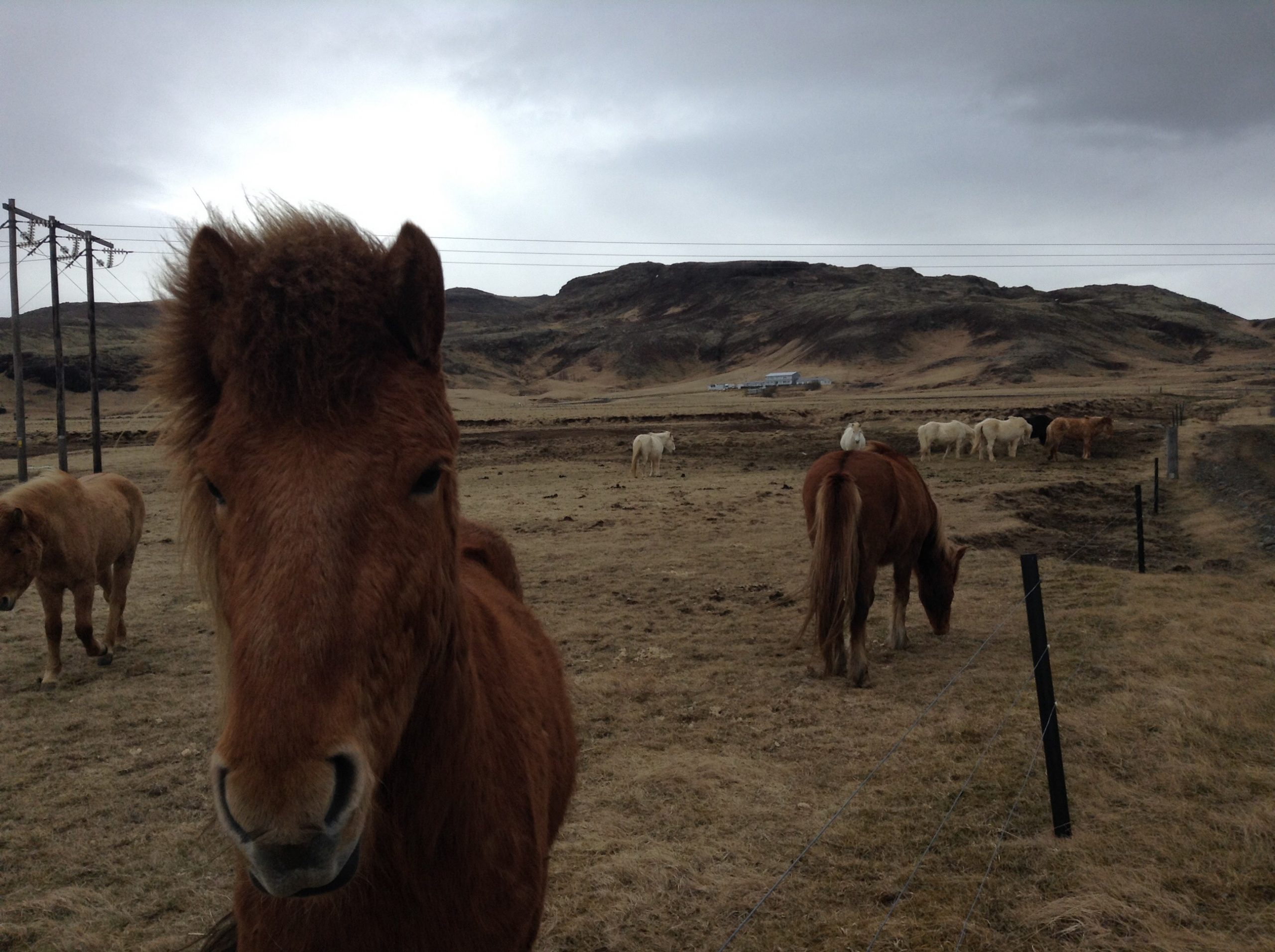
Sogn prison in the distance. Pic: Francis Pakes
I was looking for something different.
I wanted to see, feel and experience a different sort of prison – and different they were. Both open prisons were founded on a nordic ethic: they felt egalitarian. Everyone operated on a first-name basis. Even though prison officers wore uniforms and prisoners dressed casually, the social distance between the two groups seemed small.
The officer in charge in both prisons was highly visible and approachable. Any prisoner would see them several times a day: at meal times, or when they grabbed a coffee. officers mingled with prison- ers regularly, getting to know their daily habits and temperaments in a more natural setting. I noticed that prison officers who were off duty sometimes simply turned up to catch up with prisoners and colleagues. One brought their dog in, as did some visitors. one officer sometimes brought her children. The prisoner could go for a fairly long stroll, all the time within the prison perimeter, with his parents and dog. It is a far cry from the highly regulated and physically constrained visiting settings in most prisons elsewhere.
Trust was a concept the prisoners often discussed. I was told that new prisoners don’t have to earn it – it was presumed that they had earned it in their previous prison. Trust is for a prisoner to lose, not to earn.
The clearest symbol of the prisons’ approach to trust is the doors, which are frequently left open. Then there is the obvious lack of ‘hard’ security: no walls or fences. monitoring is limited to a few cameras. Any prisoner who felt the urge could sim- ply walk out: that’s the nature of open prisons. It’s just that they don’t.
At least, most don’t. Sogn prison briefly made global news in April 2018 thanks to an audacious escape. A prisoner had actually climbed out of a window at night and made his way to an airport. There was added drama when it was discovered that he had managed to board a plane that was taking Iceland’s prime minister to sweden. The prisoner was apprehended in Amsterdam after he over-enthusiastically posted his whereabouts on social media.
What is striking is that this incident did not affect the open prison philosophy. These things can happen: they don’t render open prisons a failure, nor do they make a case for a complete overhaul of prison security.
Trust was evident in other ways, too. In one prison, inmates were actually allowed to leave the prison grounds. I went for a run most days. From his office window, the governor pointed to a few small posts in the distance. He said: ‘That is the boundary, that is as far as you can go. Just tell us when you leave and tell us when you’re back.’ And I did. Whereas concerns are frequently raised about the physical fitness of prisoners in the UK, in Iceland I felt I could be outside every day and remain physically active.
Nothing symbolises trust more than the fact the prisoners have their own key to their room. You could call them cells but they really are rooms, with a normal door and a complete absence of bars or other features typically associated with prison cells. For instance, there’s no latch through which you can be observed. many prisoners simply leave their door open.
That sounds straightforward enough: in an atmosphere of trust, why would you need to lock your door? But I was mindful of the spectacular escape at Sogn. I happened to be there the very day after it had occurred, with Icelandic television crews hovering outside covering the story. I did worry that my rental car, passport and wallet could provide the perfect prison escapee starter pack. But in the end, I did what the other prisoners did and left my door unlocked, day and night. You get used to it pretty quickly.
And I slept very well. I felt safe.
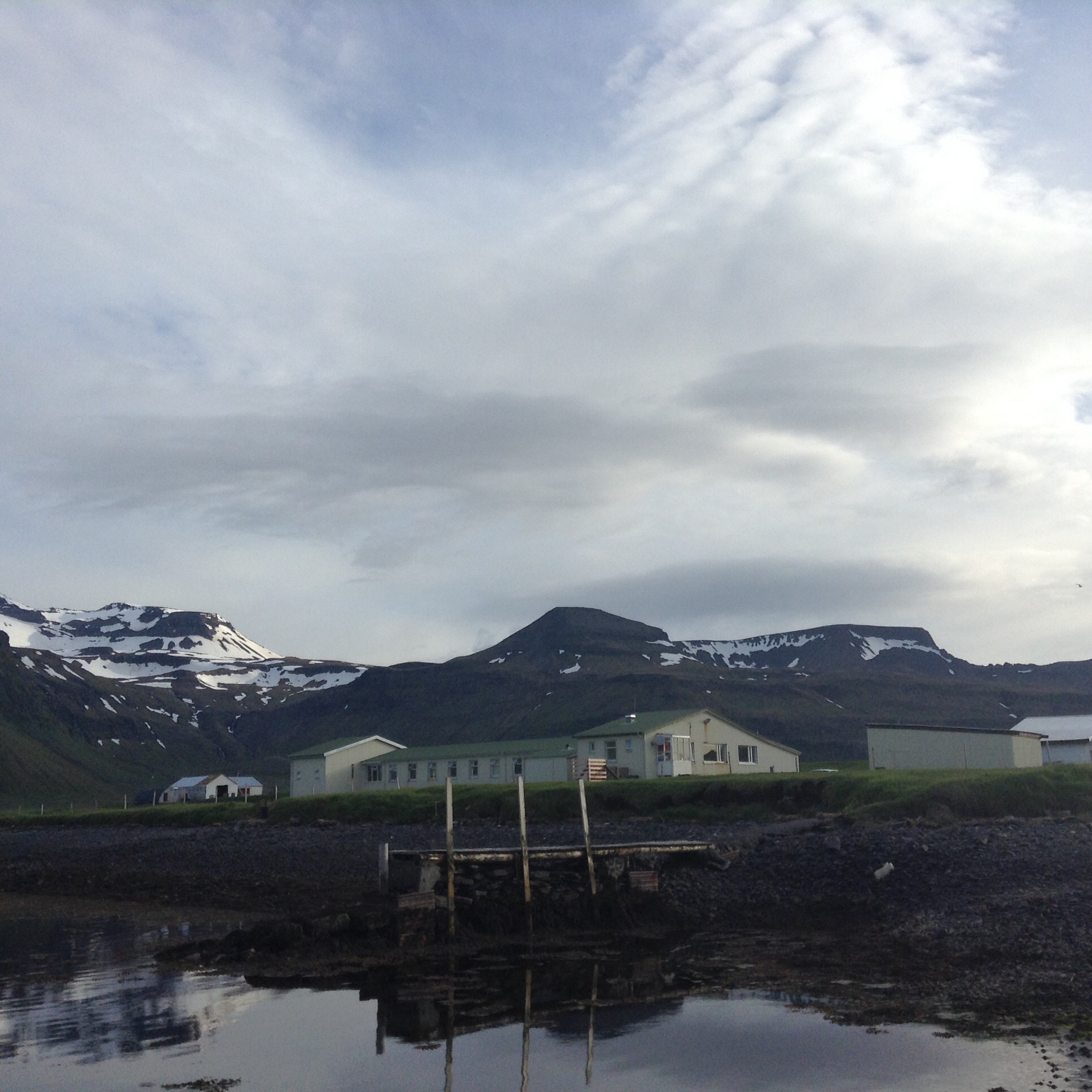 In two short spells living life as a prisoner, I discovered things about these prisons that I could not have learned any other way. For instance, I noticed the importance of food. I appreciated how mealtimes provide a structure to the day.
In two short spells living life as a prisoner, I discovered things about these prisons that I could not have learned any other way. For instance, I noticed the importance of food. I appreciated how mealtimes provide a structure to the day.
In prisons where much of what’s good in life is unavailable, food means a great deal. It’s cooked by prisoners, and being a chef is a high status job. It’s important to get it right: from the weekly shop in a nearby village or town, to getting the actual cooking done on time.
Mealtimes worked like clockwork. The food was great. Highlights included lamb sourced from the prison grounds, a salad involving grapes and nuts, and meatballs of a size I had rarely seen before.
The other side of the coin is that prisoners are expected to show some appreciation. It’s considered poor form not to thank the chef. Cleaning up after yourself is important, too.
I was struck by the emphasis on cleanliness. Both prisons were kept very clean by prisoners. It became clear to me that cleanliness was associated with maturity and being a good prisoner. Prisoners who don’t clean up after themselves, or who fail to thank the chef are seen as immature, or worse.
Although they are open prisons, few prisoners go out to work. much of the work is manual labour to do with running the prison (cooking and cleaning), managing its livestock (sheep in one prison, chickens in the other), as well as maintenance (fixing roofs or fences).
At one point there was trouble in the kitchen: an oven broke. one of the prisoners, a relatively new arrival with experience running a construction company, was given a range of tools – and hey presto, half an hour later the oven was up and running. I can’t say that there was an absence of discipline, but most everyday interactions were friendly and either focused on everyday chores or else chats. The main job of a prison officer turned out to be answering mundane queries, running errands (taking a prisoner to a bank, or a doctor) or merely being there. Their raison d’être was not to keep the prisoners enclosed or under control.
The prisons, no doubt, are very Icelandic in nature.They have developed organically in a society of small communities where the harsh climatic con- ditions mean that collaboration is essential.There’s little or no room for social stratification.That attitude is reproduced in Iceland’s open prisons. Both Kvíabryggja and Sogn are small communities where helping is a core value. It would be hard to replicate that in a much bigger prison, with high turnover of staff and prisoners alike.
At the same time, we can draw an analogy to community policing. Where policing is characterised by frequent, low key, informal interactions with citizens, it can build trust and can operate more effectively. A similar process is at work in Iceland, where the bedrock of engagement is low-key and friendly. As a result, a culture has been created in which disciplinary issues are relatively rare – and where they occur they tend to be minor.
The culture of Iceland’s open prisons – surprisingly social and relaxed, very much led and enforced by staff – is something worth thinking about. Just because Iceland’s idiosyncrasies allowed it to spring up naturally doesn’t mean that it couldn’t apply elsewhere. And that just might make prisons better places to be, where prisoners suffer less and are more likely to find a path towards a more produc- tive life outside.
Let me be clear: there’s no prison without suffering.These prisons are no exception to that. Many prisoners are anxious, struggle with their health and worry about the future.
There’s anger, too. Many prisoners have profound issues with ‘the system’ even when virtually all of them are positive about their conditions. These prisons are still prisons.
Nevertheless, prisons are better when they are safe, when the food is good and plentiful, and where officers take an interest in the people that they look after. As prisons go, that means a lot. And that is a lesson worth remembering.
In the end, I was glad I got comprehensive car insurance. At the prison, one belligerent sheep had become a little too interested in the car and covered it in scratches. That was the only damage that I saw done all week.
